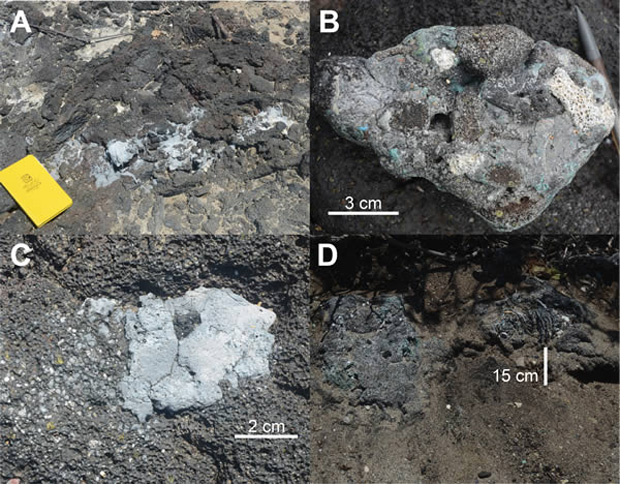Pollution forms a new kind of rock, "plastiglomerate"
What happens when you start a campfire on a rocky, polluted beach? According to a new study in the Geological Society of America journal GSA Today, you create an entirely new kind of rock: plastiglomerate.
Plastiglomerate is formed when plastic melts and mixes with beach sediment, debris, and pieces of basalt lava fragments.
The new rock could last a long time, perhaps hundreds of thousands of years or longer, especially if it is hidden from the destructive rays of the sun, deep in the dirt or ocean.
The scientists studied Kamilo Beach in Hawaii because it is isolated and receives large deposits of ocean debris, including plastic.
"We observed that some of the plastiglomerate had been buried by sand and organic debris, as well as having been trapped within vegetation, which demonstrates the potential for preservation in the future rock record," the researchers report in their article. That longevity could create a record of how humans polluted the planet that will last far into the future.
Nearly half of the plastic that could be identified in plastiglomerates was "confetti," or tiny bits of broken, decomposing plastic. Nearly a quarter came from broken lid containers. Fishing related debris was found in 20 percent of the samples.
